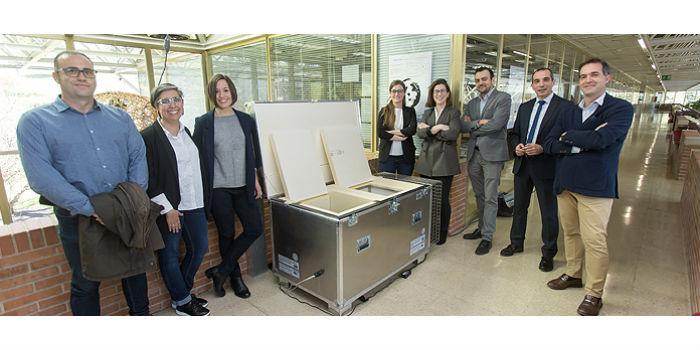 International. The University of Navarra of Spain and the company ACR Grupo have sent a prototype of an industrialized façade to Antarctica to test, in the most adverse climatic conditions, a novel heating and cooling system that they have been investigating since 2016.
International. The University of Navarra of Spain and the company ACR Grupo have sent a prototype of an industrialized façade to Antarctica to test, in the most adverse climatic conditions, a novel heating and cooling system that they have been investigating since 2016.
It is a model that is committed to sustainability and aims for its future commercialization in the market. The project is developed in the School of Architecture of the academic center and is financed by the Government of Navarra through ERDF funds from the European Union. The overall budget of the project amounts to more than 310,000 euros.
The Spanish Antarctic Base Gabriel de Castilla has been in charge of collecting information on the operation of the façade in recent months. This is the first time that a prototype of these characteristics has been tested in conditions as complex as those existing in Antarctica.
The project, whose objective is to seek a sustainable alternative for the air conditioning of Nearly Zero Consumption Buildings, allows to join heating and cooling in a single system that eliminates CO2 emissions associated with fossil fuels, as well as the use of refrigerant fluids using only renewable photovoltaic energy, all this thanks to the properties of thermoelectricity.
Project underway since 2010
The project to create this system has been underway since 2010, when the University began with a line of research focused on the benefits of thermoelectricity. In 2016, ACR Grupo joined the project bringing its use closer to the building sector.
The prototype sent to Antarctica has been prepared ad hoc for this purpose, adapting its size to the conditions in which it was to be transported and installed.
"Being able to test the system in Antarctica represents a huge opportunity. On the one hand, because it means being part of the cutting-edge technology that falls on such an important scientific basis to take advantage of extreme conditions that would be very difficult to emulate in any trial. On the other hand, because it represents an important boost for a very relevant project in our group and in its commitment to R & D as a sign of identity", explains María Ibáñez Puy, responsible for the project by ACR Grupo.
César Martín-Gómez, researcher responsible for the project and professor at the School of Architecture, assures that the "serious" problems faced by the cities of the XXI century cannot be solved only with conventional solutions: "I hope that this project, in which we have been embarked since 2010, and that aims to eliminate the use of refrigerant fluids using only renewable photovoltaic energy, is a step in the direction that society is demanding of us today."
This innovative project in the building sector is part of the "Green Campus" project of the Horizon 2020 initiative of the University of Navarra, as well as in the philosophy of ACR Grupo of betting on innovation as one of the fundamental ways of improving and optimizing its work and also as a way to add value to society in all those places where it operates.
Project data
In the project, which is entitled "Module of industrialized, autonomous and active façade for air conditioning: integrated final demonstration. iACTIV 2.0", participated by ACR Group: María Ibáñez, Jesús Alonso, Manolo González and Fernando Ibáñez. For its part, the University of Navarra does: César Martín-Gómez, José Antonio Sacristán, Kattalin del Valle de Lersundi, Marina Vidaurre, Amaia Zuazua and Luis Fernando Urrea Irigaray.
Source: University of Navarra.














